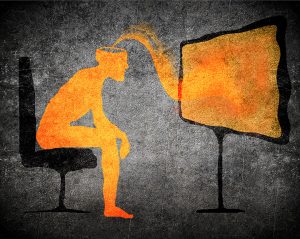
Effective Psychological Tactics for Your Next Video

Messages persuade people through two paths: the central and peripheral routes. The central route refers to persuasion that is done through the actual content of a message. On the other hand, the peripheral route is activated when we are persuaded by factors not related to a message itself—such as speaker attractiveness, tone of voice, or credibility.
If you took psychology in college, you may remember the elaboration likelihood model of persuasion, or ELM. Developed by researchers Richard E. Petty and John Cacioppo, ELM explains that messages persuade people through two paths: the central and peripheral routes. The central route refers to persuasion that is done through the actual content of a message. On the other hand, the peripheral route is activated when we are persuaded by factors not related to a message itself—such as speaker attractiveness, tone of voice, or credibility.
But what does any of this have to do with video advertising?
The video medium is a prime environment for effectively leveraging the ideas of the ELM because you can craft messages that persuade consumers on both levels. Those who are likely to be swayed through the central route will respond to strong messages about your product or service and the reasons why they need what your company has to offer. In order to do this, find out who your audience is and what’s important to them and create arguments they will find convincing.
However, those who are more likely to be convinced by the peripheral route will respond most favorably to messages that engage their emotions. In this case, you need to create videos that will make the audience associate your brand with positive feelings such as happiness, surprise, amusement, excitement, and interest. These feelings will not only get people to watch your content, but also to share it and ultimately click the buy button.
One primary way that advertisers elicit these emotions is through the use of music. Music is a powerful tool that can generate positive feelings and enhance the experience of the listener. After all, who hasn’t gotten lost in a favorite song or felt better after hearing an upbeat tune? By choosing the right music for your video, you can make viewers transfer their positive emotions to your company—which may ultimately help them become loyal customers. Just be careful when using this tool: Although you want people to enjoy the music in your video, you don’t want it to drown out your verbal message.
Similarly, the use of color in a video can have a powerful effect on your audience’s emotions. The right color scheme can enhance your visual presentation and cause people to interpret your message in a positive way. Use colors that are easy on the eyes and repeat them in order to get your content ingrained in the viewer’s subconscious. The correct use of these subtle cues will make your videos memorable and get people excited about your brand.
